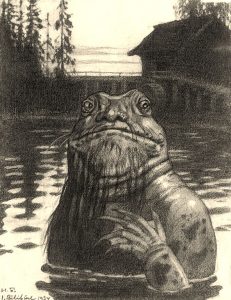
Every culture has its own version of folklore and urban legends. Folklore is the traditional stories, beliefs, and customs of a community passed through the generations commonly by word of mouth. There are many types of folklore that branched into:
- Ballads; traditional poems or songs that tell stories.
- Fairy tales; traditional stories intended for children to teach them morals and cautions. The tales usually talk about the encounters between humans and fairies, witches, and other supernatural beings.
- Folk art; traditional artistic crafts such as paintings, quilts, pottery, and many more that show images and symbols from local mythology.
- Folk dances.
- Folk songs; usually played on acoustic instruments.
- Jokes; humorous stories or anecdotes that could be very personal to a community and could be called inside jokes since they may not be taken as funny by other traditions of groups of community.
- Legends; a collection of traditional tales that said to be true but could involve fictions as well about events and such with moral lessons loaded in them.
- Myths; traditional stories about natural phenomenon or cultural practice.
- Riddles.
- Superstition; often considered as irrational beliefs that involve supernatural forces and rituals.
- Urban legends; stories spread by word of mouth that are said to be true because always involve people or places that really exist in a community.
People have their own favorite form of folklore depends on taste and belief. If you are among them who love getting scared by creepy stories, check out these 6 monsters from Russian folklore:
1. Domovoi
This is probably the most popular spirit in Russian folklore and also one of the oldest. Domovoi lives under the stove at home and only comes out at night. Pictured as an old bearded man with burning eyes, horse ears, a tail, and no eyebrows, Domovoi sounds quite scary especially for children. Although rarely has ill intentions, this creature can be quite aggressive if ignored or not respected. Because Domovoi is the spirit of a home, he acts as a guardian of the house and the people who live in it. He’d like to be considered as a part of the family. Modern Russian people who live in apartments or houses downtown don’t really believe in Domovoi anymore, but the spirit and his story will always be alive and passed on from generation to generation.
2. Vodyanoy
This monster or creature is probably quite similar to the American Swamp Thing. Vodyanoy is a male water spirit that appears as a naked man with a frog face, greenish beard, long hair, and his body is covered with algae, muck, and black fish scales. His hands are webbed paws like Komodo dragon’s and the eyes are red like burning coals. It is believed that some drownings are caused by Vodyanoy. He would drag people under water and turn them into his slaves.
3. Likhoradka
This time we’ll meet a female spirit that comes from Slavic mythology and Russian legend. She belongs to the dark side and can possess humans as sickness. This is why, in modern Russia, the word likhoradka also means fever and plague. There are twelve Likhoradkas, also known as tryasavitsas, with specific name and associated illness for each of them. Pictured as a tall woman with disheveled hair and a pale face who dresses in white, Likhoradka would transfer the disease by touching the victim. The appearance may remind you of common female ghosts and spirits from other folklores around the world.
4. Gamayun
Coming from the Slavic folklore, Gamayun stands on the opposite side from Likhoradka. She is a divine spirit that spreads prophecies and knowledge to people. She knows everything about the gods, heroes, and man. Calling her a monster may not be quite right, even though her appearance could be quite frightening, as she has a giant bird body with a lady head.
5. Rusalka
This folklore creature is similar to the concept of common mermaid known by the world. Rusalka comes from Slavic paganism, is associated with water and ill intentions toward men. Before the 19th century, though, Rusalka was not considered as an evil spirit. She was thought to bring fertility to the fields that helped the crops to be fruitful. Entering the 19th century, the version of her story changed. Rusalka become a haunting spirit of a woman who died in the water; either by suicide because of a painful romantic background or drowned against her will. The evil spirit would then seek vengeance by alluring men and drown them by appearing as a very beautiful woman.
6. Baba Yaga
This is another female spirit from the Russian folklore and one of the most popular ones. Baba Yaga is an old woman with deformed face and chicken legs who lives deep in the forest and flies about on a mortar. There are two versions of Baba Yaga that circulate in the society. One says she is a donor – a spirit that tests heroes but will provide magical assistance if they pass the tests, while the other says she is a villain. Some parents would tell the story about her to discipline their children in a way. A version also says that Baba Yaga is a set of three witch sisters. Because she is the most widely told character of the Russian folklore, you can find her printed on some folk art products. If you wish to bring home a story book for children from Russia, then you would most likely find Baba Yaga as the one who appears on most of the books.
You can find complete stories about the 6 folklore monsters above around the internet easily. They may give you some trouble sleeping tonight, but if you like getting scared then they are worth it.
